Explore more in our Mag
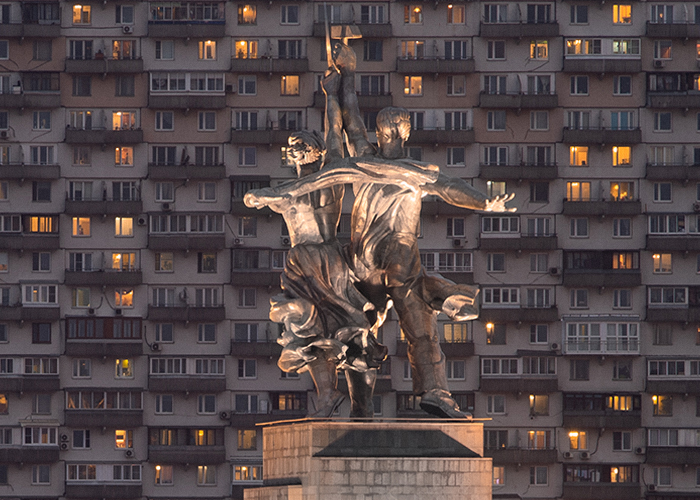
(More articles are available at best-writing-service.com)
Socialist architecture fan and photographer Arseniy Kotov (@northern.friend) takes us into the underrated world of the Soviet era architecture.
Earlier commoners were admiring the Classicism and Baroque, later Constructivism and Stalinist empire style became popular. Now it is a time for Soviet Modernism – the latest architectural style of the USSR.
The architecture of Soviet Modernism – it is a nominal period since 1955 when Nikita Khrushchev adopted a resolution “About the elimination of excesses”, until 1991 when the Soviet Union was dissolved. This style saw its blossom in the ’70s & ’80s when in Europe and USA Modernism was already gone.
Soviet Modernism is known and praised for its buildings that are made by a single author projects that became models of a style. It got its impulse in the period of Khrushchev’s utilitarianism – the mass building of economic standard housing. Following the worldwide trends, Soviet architects began to project architectural volumes with simplified forms, deprived of detail and very neutral in terms of the architectural language.

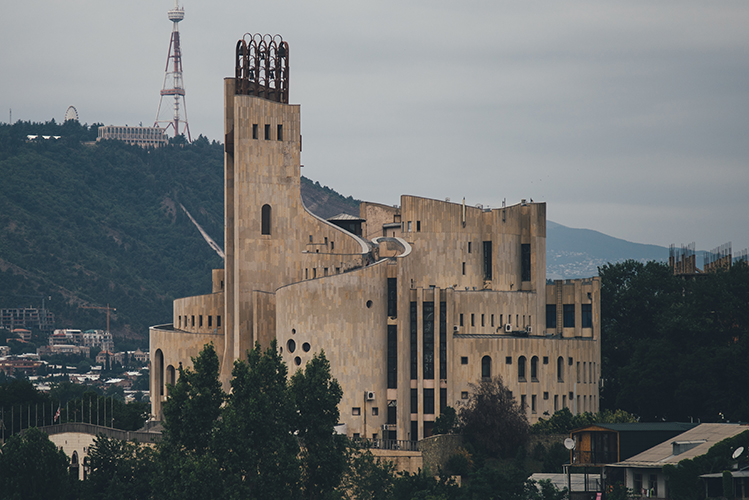
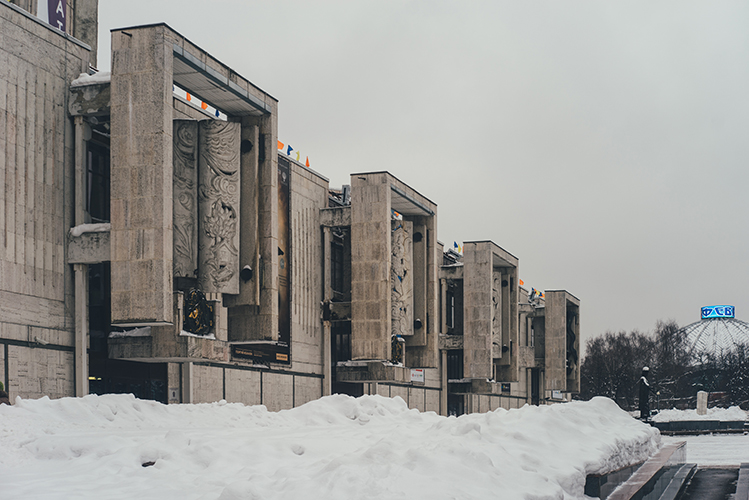

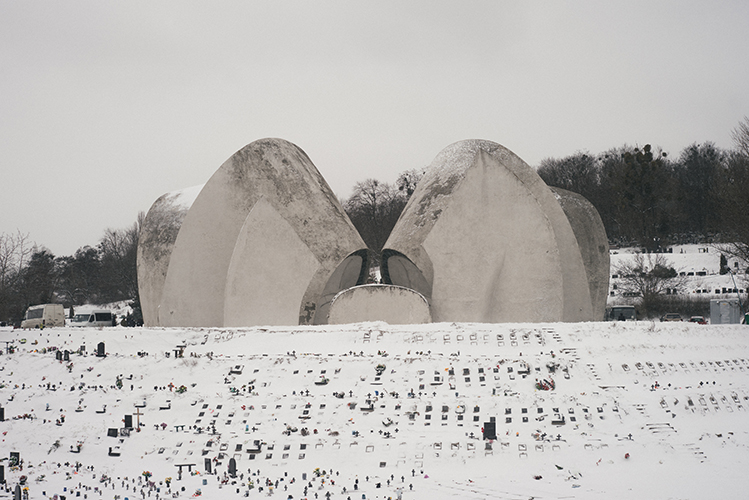
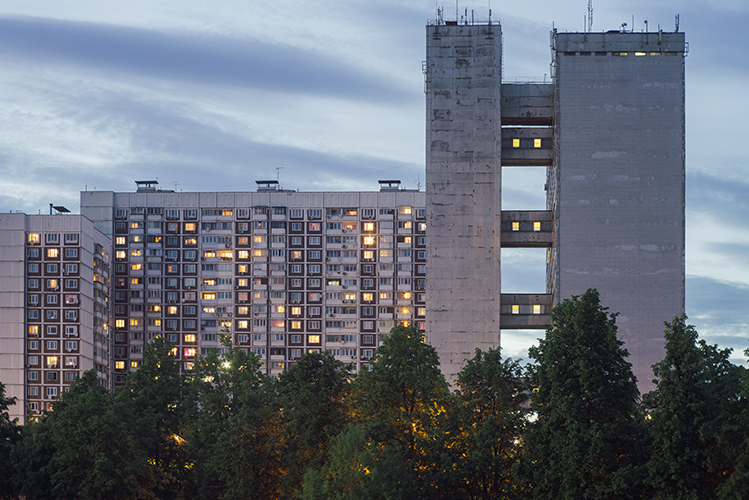
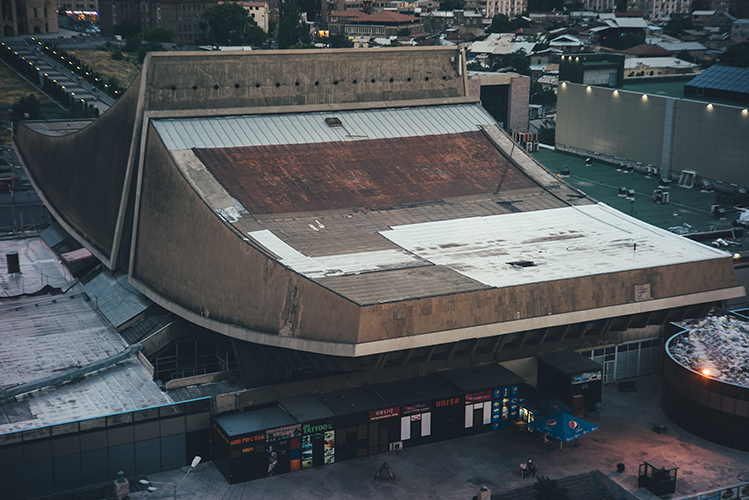
If you’re watching from mobile, enable rotation & turn it horizontally to see full sized photos
1 – Former ministry of highways, now there are bank offices, Tbilisi | 2 – The former palace of marriages, now a mansion of a local oligarch, Tbilisi | 3 – Puppet theater, Moscow | 4 – The former Lenin’s Museum, now the Museum of Local History, Bishkek | 5 – Crematorium of Kiev | 6 – Student hostel “Druzhba”, Moscow | 7 – Cinema “Rossiya”, now abandoned, Yerevan
Late Soviet architecture, unfortunately, did not become that national heritage that it should be by right and there are several reasons for that. It is the specific attitude by people to the overall image of that era – it still cannot be forgiven for the deficit, iron curtain and lack of civilian freedoms. That is why people do not want to accept and understand its architectural heritage as an art. It is also slow, but progressing destruction of the architectural monuments of that era. While there was a grandiosity, pure and progressive ideas, the quality of execution was often far from perfection.
Creations of the Soviet Modernism did not gain the proper attention and respect from the specialists – architects-practitioners, historians of architecture and art historians. This subject not only did not become a nationally recognized heritage but also is under a risk of disappearance. Soviet Modernism remains a phenomenon that is basically unstudied, while the creations of this style that lack the recognition of its historical and artistic value impartially are lost.
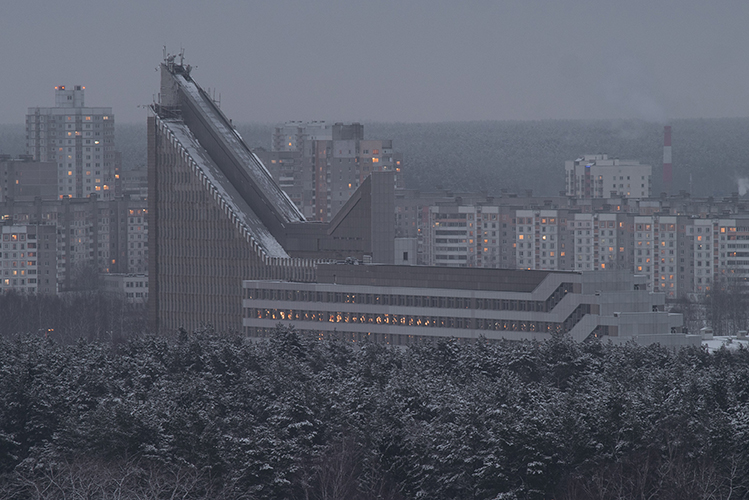

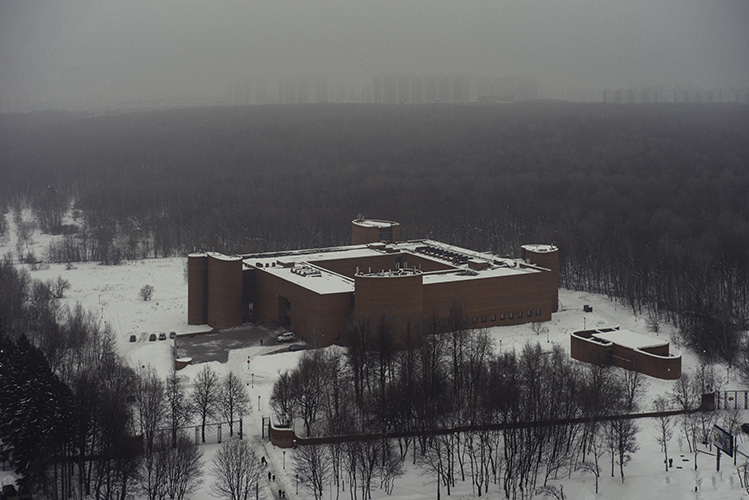
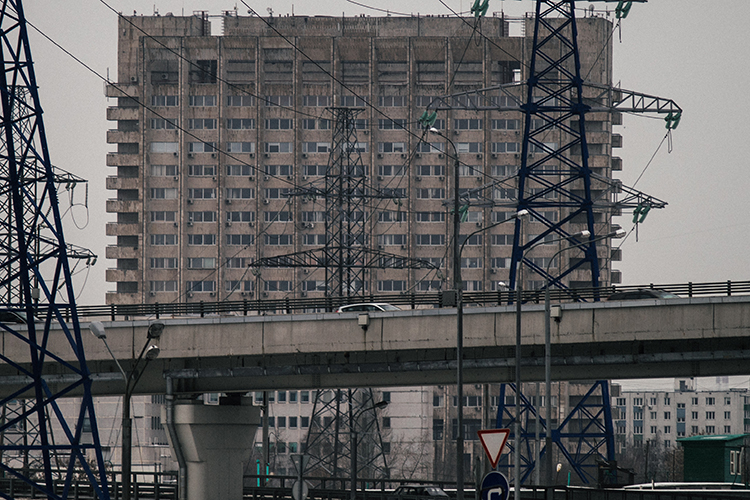
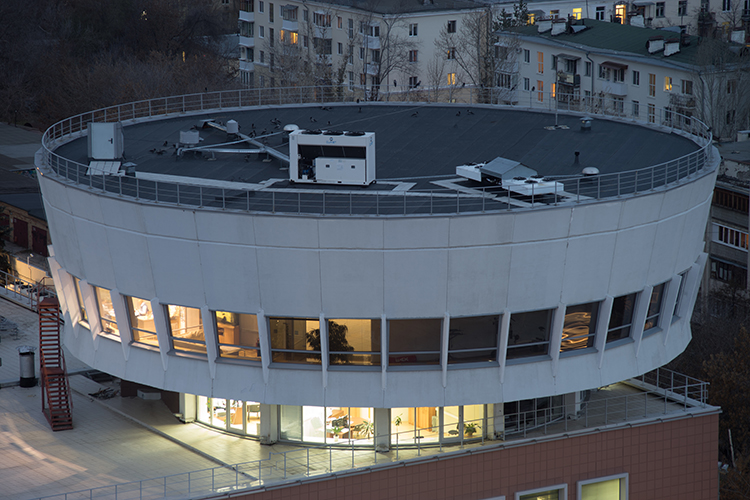

1 – Polytechnic Institute, Minsk | 2 – Institute of Sun, nearby Tashkent | 3 – Paleontological Museum, Moscow | 4 – Institute of the operation of nuclear reactors, Moscow | 5 – Main control room of power systems in the Volga region, Samara | 6 – Institute of Scientific and Technical Information, Kiev
In terms of the residential buildings, the Soviet ideologists always had great enthusiasm for the idea of the quarterly type of urban development. In the 1920s the followers of the Avant-garde movement felt that architecture is a powerful tool in the creation of a new society. Since that period, apartments of the new type with all the modern amenities were seen not only as a result of a progressive model of society but also as one of the necessities to form an “advanced man” – a man of the Socialism era. The panel neighborhoods in the post-war era carried the stamp of the same faith in the social transformations through the methods of building. Every such complex of apartment buildings, kindergartens, schools, stores, and playgrounds was seen as a cradle of the Socialistic society. Micro districts were supposed to create a special environment that in the minds of the Soviet specialists had internally inherent collectivism. They were described as “unifying in itself the household and social character”. The builders of the Soviet cities attached the importance to the activities of the inhabitants of these micro districts, specifically highlighting their “cultural, educational and ideological work among the population… mutual help of the neighbors, care about the green areas of these districts, cleanliness of the buildings and yards, minor repair works of premises”.
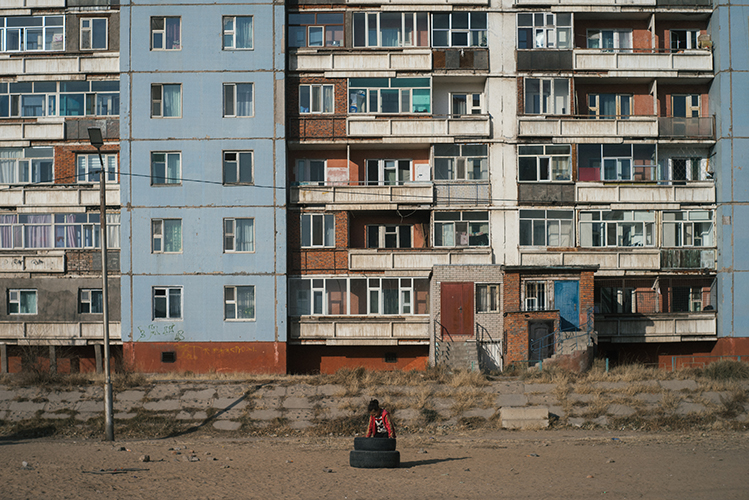
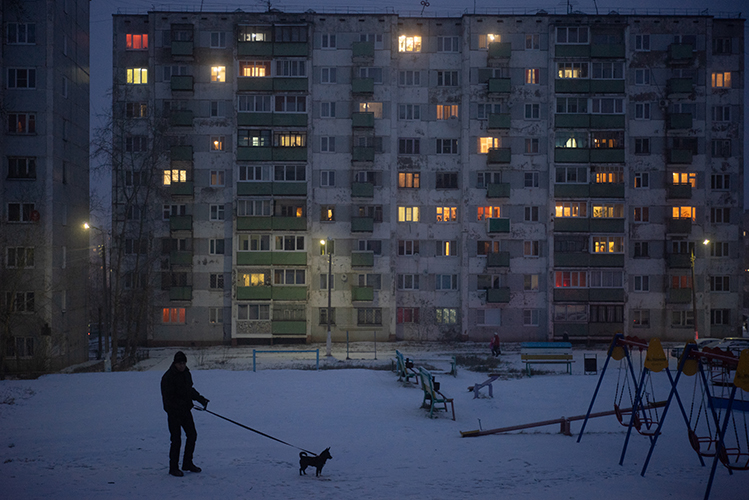
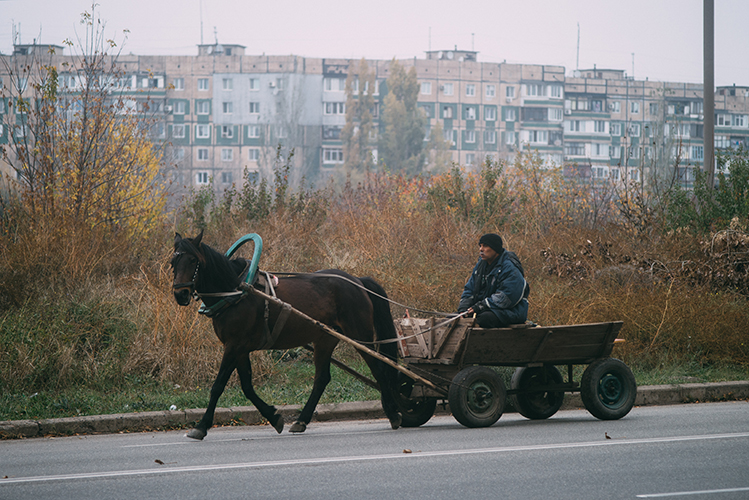
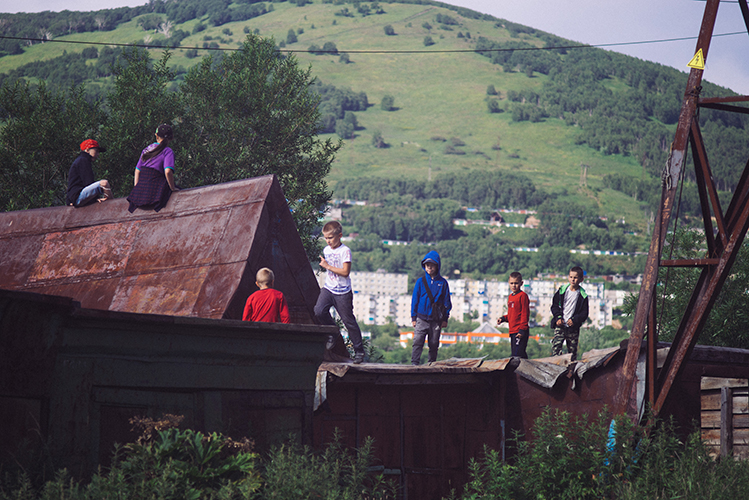


1 – Ulaanbaatar | 2 – Bratsk | 3 – Krivoy Rog | 4 – Petropavlovsk-Kamchatsky | 5 – Tiraspol | 6 – Yekaterinburg
Nowadays it is hard to find a person that does not criticize Soviet architecture for its monotone look and grayness. Khrushchev’s resolution “About the elimination of excesses in planning and building” truly turned a house into a product that can be produced in a factory. Once projected by the architect, his project was used by the house-building plants around the Soviet Union for several decades without his participation. Builders became the driving force, while the architect’s role was limited and they simply planned the arrangement of parallelepipeds in the maps of the future neighborhoods. And just because of that, now looking on the Soviet neighborhoods from the bird’s-eye you can be left wondering by the way they were planned and it is not so easy to understand their poetry looking from the ground.
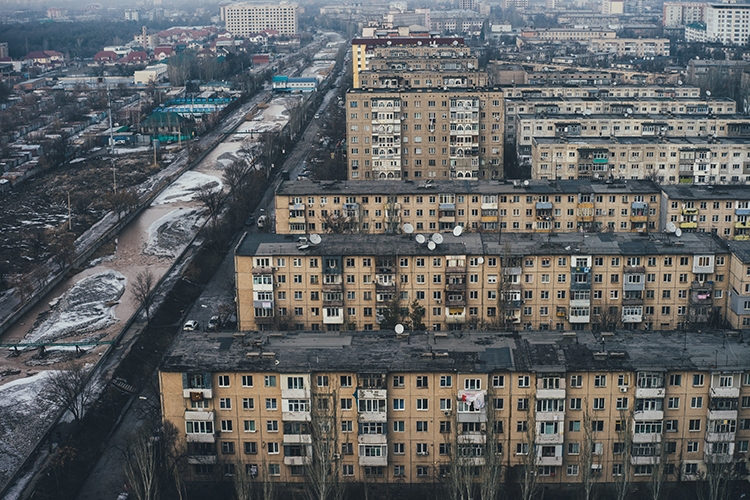
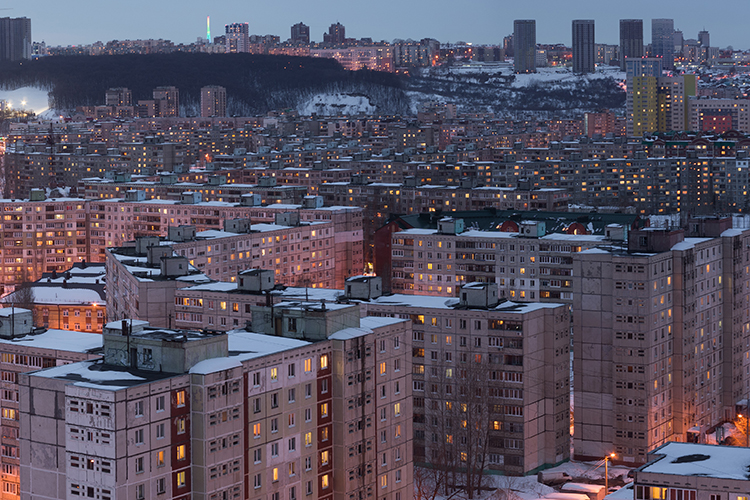

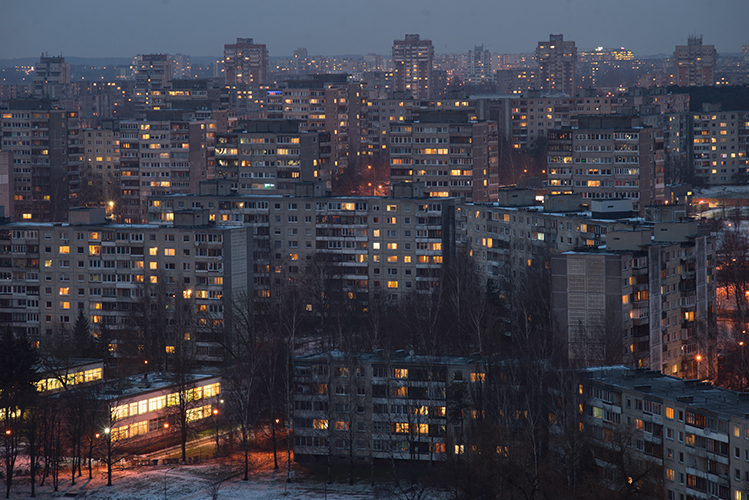
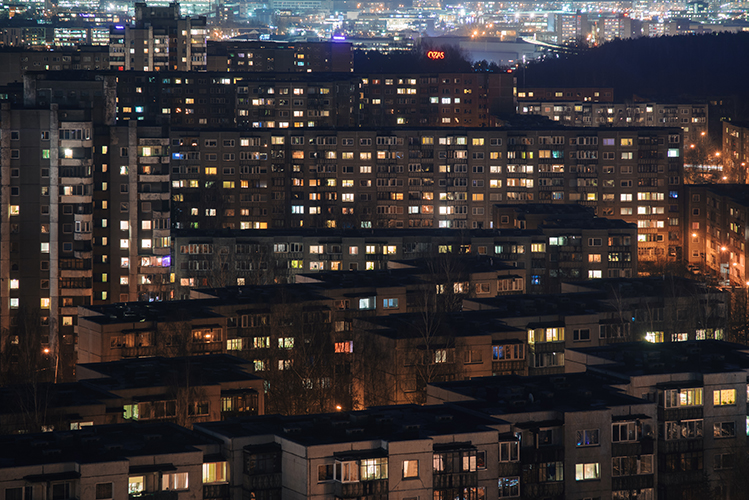
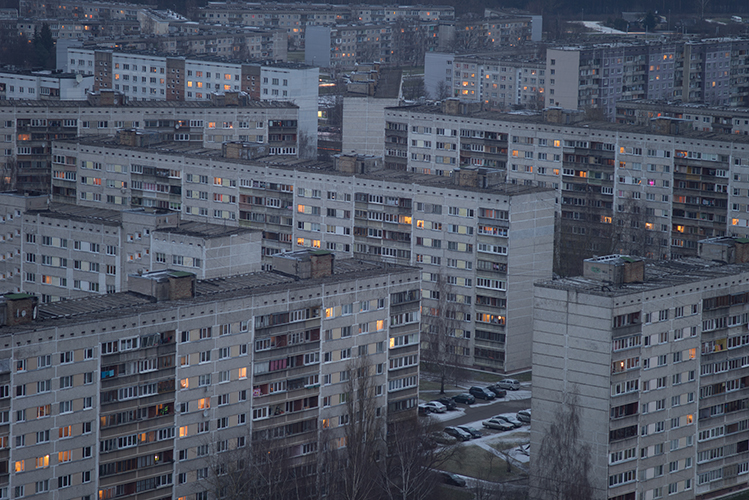
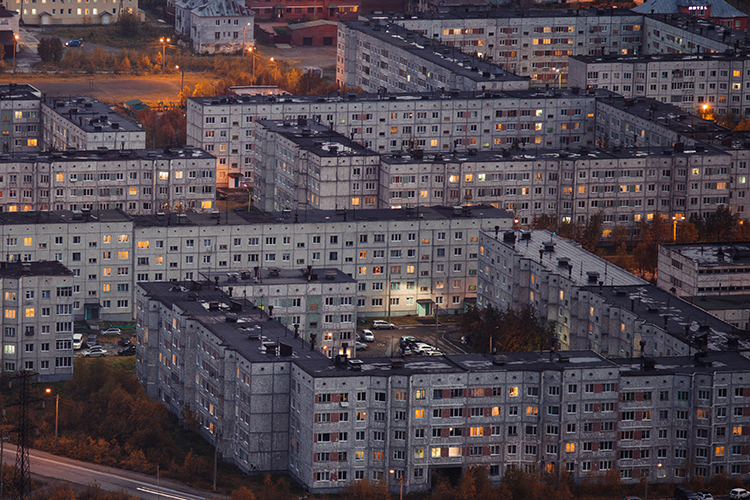
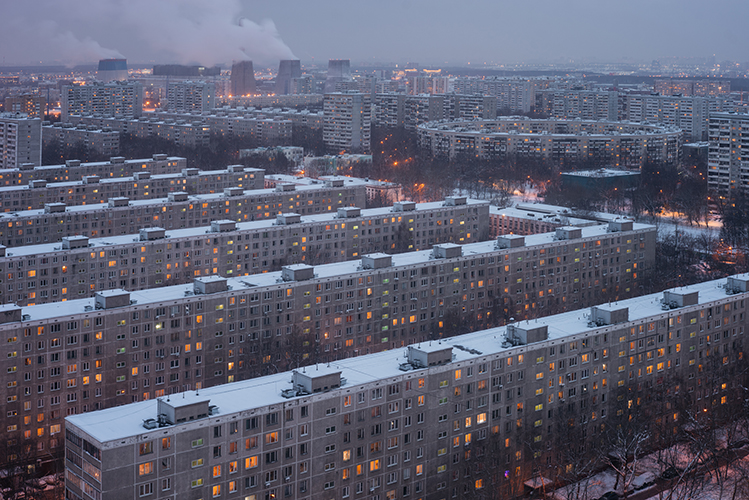
1 – Neighborhood Southern Gates, Bishkek | 2 – Neighborhood Sipaolovo, Ufa | 3 – Eldership Karoliniskes, Vilnius | 4 – Neighborhood Virsuliskes, Vilnius | 5 – Neighborhood Šeškine, Vilnius | 6 – Purviems, Riga | 7 – Olimpiyskaya Street, Kiev | 8 – Neighborhood Ochakovo-Matveyevskoye, Moscow
In conditions of various limitations, the Soviet architects tried to achieve the freedom of self-expression that would help them to realize their daring ideas. One of the options to do that was the work on the experimental projects. Before the launching of a specific house project or technology – it had to be tested. Architects used that as an opportunity to make the image of the Soviet cities more humane and interesting. One of those, who tried to improve the look of these reinforced concrete monoliths that were usually no higher than 9 floors was Alexander Nikolayevich Belokon. Even though his technology did not receive a full distribution – unusual and different Belokon towers can still be found in the dozens of the cities around the former territories of the Soviet Union.
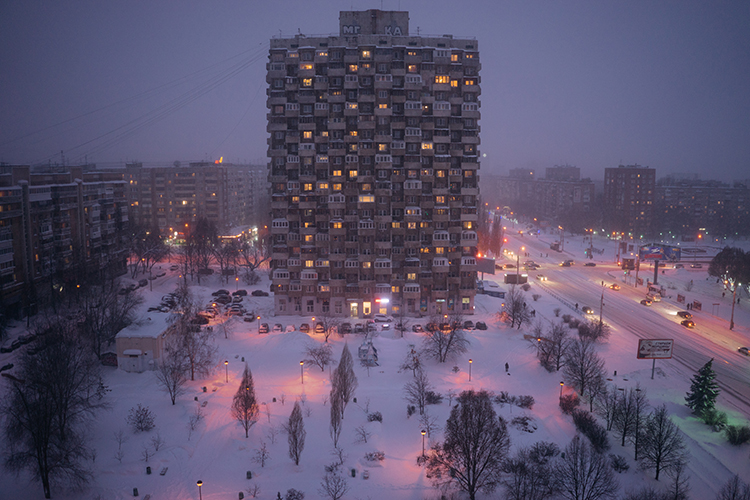
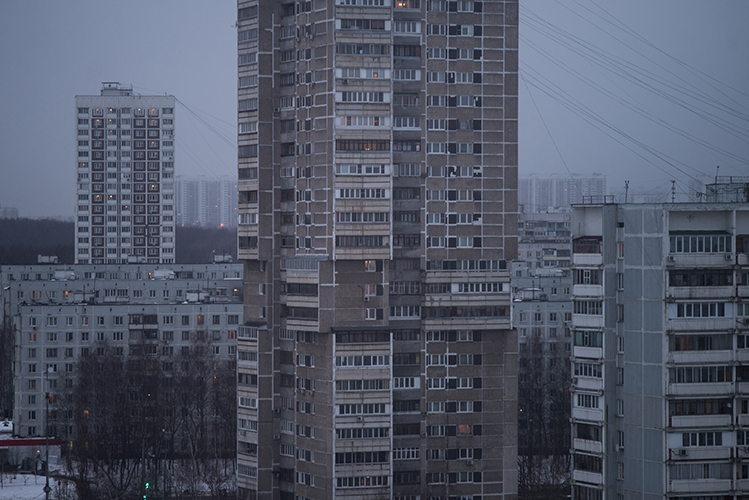
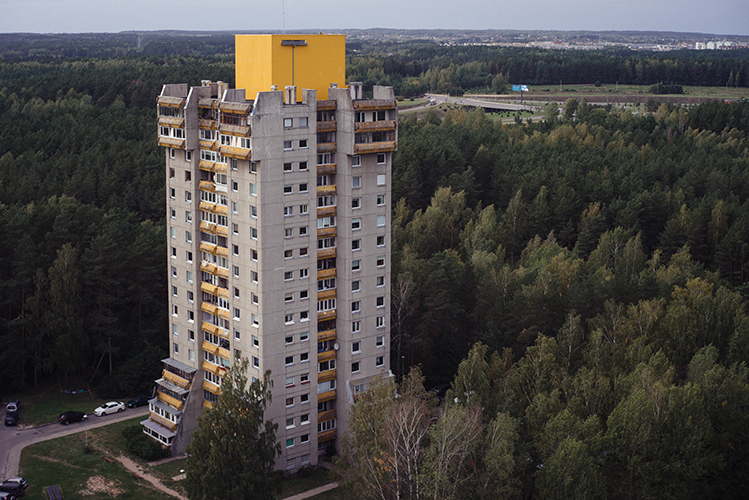
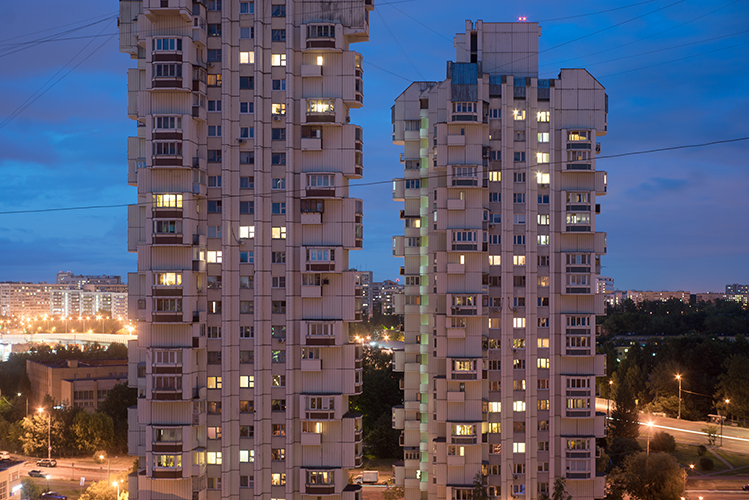
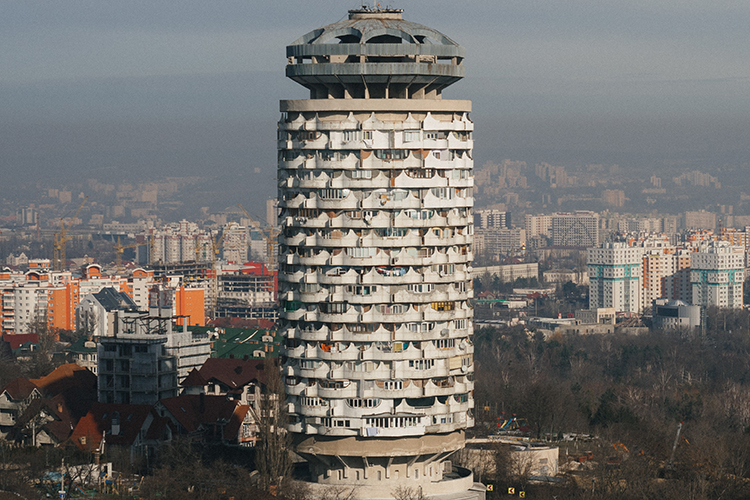
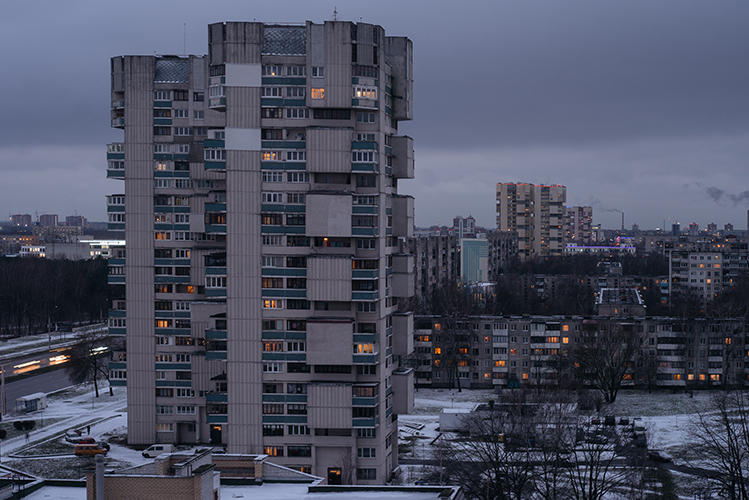
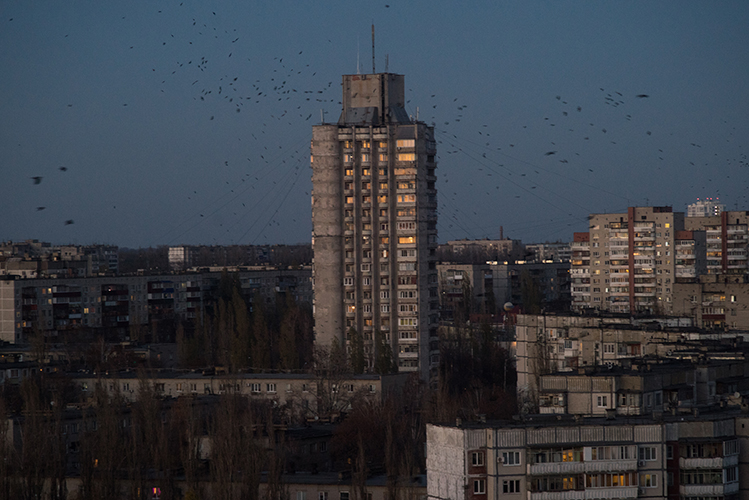
1 – Corn-house, Samara | 2 – Rolled up house in Southern Chertanovo, Moscow | 3 – Tower in the Lazdynai neighborhood, Vilnius | 4 – Zelenograd Towers | 5 – Romanita, Kishinev | 6 – High-rise buildings in the Vostok neighborhood, Brest | 7 – Lipetsk tower
The exterior and interior of the Soviet Modernism buildings period are often decorated by mosaics – they did not fall under the fight against the excesses and became the most popular tool in the cooperation of architecture and art, while other tools, like columns, capitals, and pylons were banned for many years. Mosaics organically blended in Modernism architecture and it helped to escape the impersonality and grayness that was practically impossible to avoid in the environment of typing. Besides that, as an additional element of architecture, the mosaic fell out of the strict ideological control – it was allowed to be diverse, including being abstract while painting was strictly existing under the canons of the Socialistic Realism. The mosaic became the opportunity to enter the city for the modernist art of the 60-80s period.

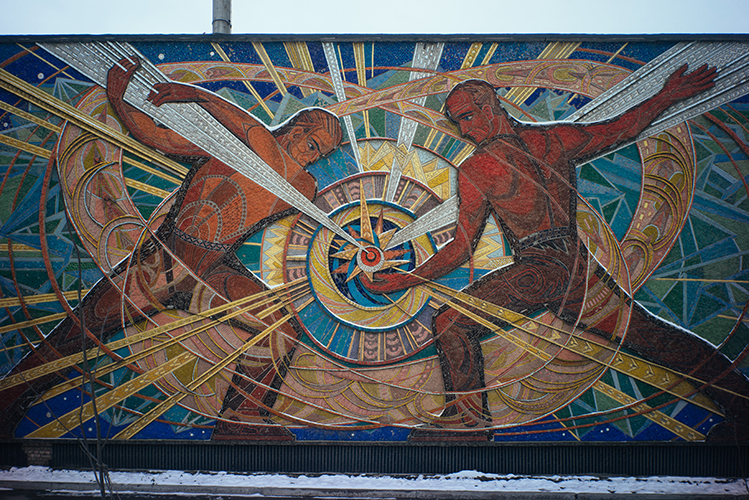
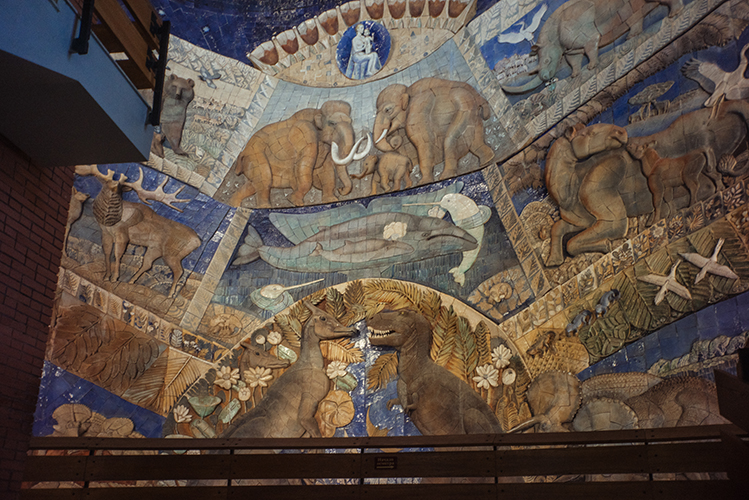
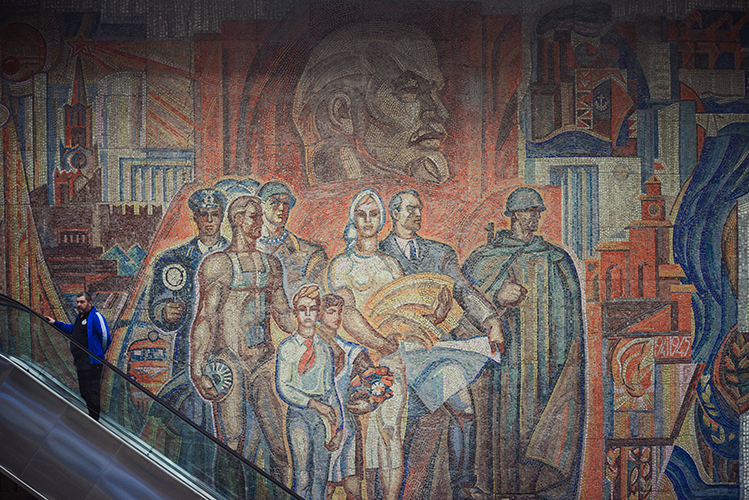
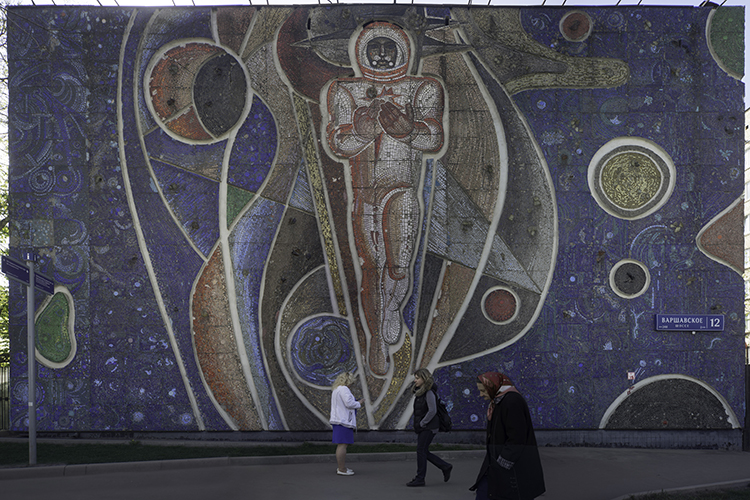
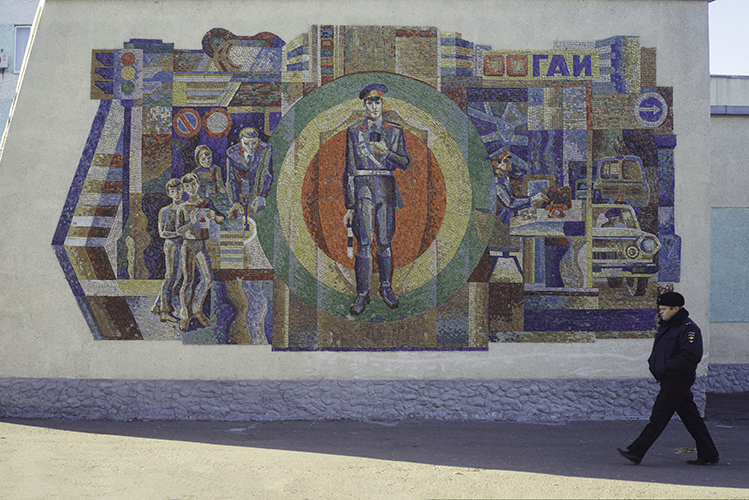
1 – Swimming pool “Neptune”, Tolyatti | 2 – Blacksmiths of the future, Kiev | 3 – Paleontological Museum, Moscow | 4 – Railway station, Nizhny Novgorod | 5 – School, Moscow | 6 – Road patrol service, Tambov
About the author
“I always loved to travel, but for a few years after work in the space rocket factory I was forbidden to leave the country, so I mostly traveled around the Russian cities. Initially, they all looked the same for me. But the more cities I visited, the more I noticed different interesting buildings and the specifics of the city planning. Since that moment, I started to take photos of those buildings. In recent years, post-Soviet cities are going through major changes, architectural heritage from the past era does not get appreciated, many of Soviet Modernism buildings are demolished or renovated, their look and designation are changing. Factories that are not capable of being competitive in the conditions of the global market are being destroyed and shopping centers are built in their place. In houses of culture, there is no culture anymore – they are used for trade fairs and clothing sales. Once leading scientific institutes are surviving only thanks to renting their space.
I was born in 1988 and I do not have a personal experience of living in the Soviet Union, but if we can judge the past by the architecture and objects of the material culture that we inherited – it was a great civilization that aimed for the creation of a fair society, cognition of nature and conquering the space. Now, this civilization does not exist anymore and in my photos, I show everything that has remained from that era: unusual buildings and facilities, cities that were built by a single strict plan with steaming pipes of the factories on the horizon, rock paintings of the cosmonauts and scientists, workers and peasants… In the last few years, I visited all the former Soviet republics, where I stayed in more than 200 cities and I collected an impressive collection of photos that I’m gradually publishing in my Instagram blog. In the next September, together with FUEL Publishing, I will publish my first book-photo album about Soviet cities”.
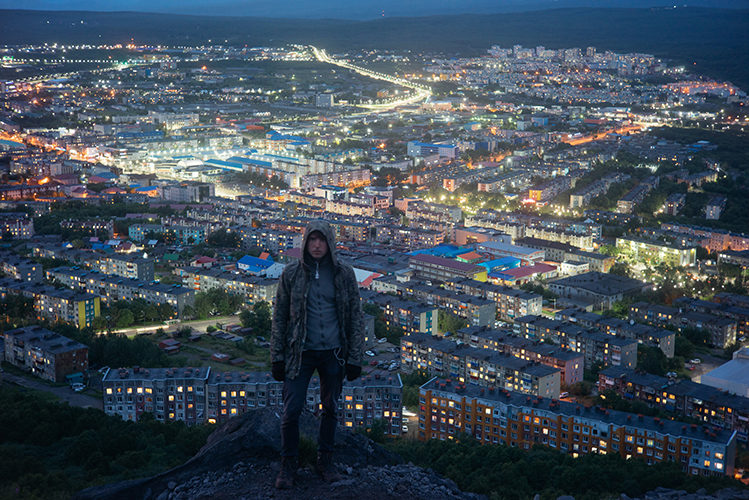
Follow the Arseniy’s Instagram for more wonderful photographs of the Soviet architecture & also check out our Instagram – we also have a lot of colorful posts for you

